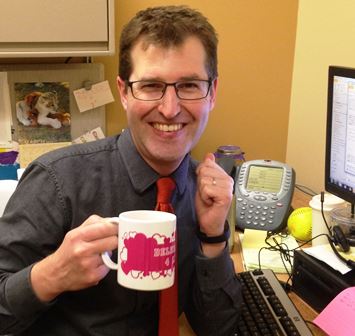Eclipse Bandwagon
A sort of review about this week’s media event in North America
In 1979, a pinhole camera seemed like pretty cool technology. With a shoebox, a safety pin, and some aluminum foil, my dad created a nifty little viewer for watching the partial solar eclipse in Indiana. I had just turned seven and come down with the flu, which gave me plenty of time to try to figure out how to watch something through a tiny hole. But hey, I watched Sesame Street on a 13-inch black-and-white TV, so a pinhole camera was practically an upgrade.
For two hours or so, people were civil to each other on Twitter, cable news didn’t broadcast pundits arguing. Netflix reported a 10 percent dip in viewership during the eclipse.
With the 2017 version of the eclipse making its way through Oregon, I told my two daughters about the pinhole camera and how we should make one. Since we already had NASA-approved viewing glasses, no one was interested in messing with foil and a box. It definitely wasn’t 1979 anymore. After all, I could watch the eclipse streaming from NASA TV—live and in color!!! The eclipse trended on social media and television networks dubbed it the eclipse of the century.
For two hours or so, people were civil to each other on Twitter, cable news didn’t broadcast pundits arguing (and cable eclipse ratings were strong). Netflix reported a 10 percent dip in viewership during the eclipse, but Facebook conversely lit up, providing a personal cross-country feed of everyone’s experiences.
Also, more than 4 million people tuned into NASA’s live stream of non-dramatic, just-the-facts broadcast. And for good reason. The eclipse didn’t need overdramatization; its actions spoke volumes. People love events and any chance to celebrate diversions. That’s why non-sports fans tune into the Olympics, why casual music fans attend Coachella, and why people who can’t locate Ireland on a map will celebrate St. Patrick’s Day.

Before eclipse.
I’m guilty of jumping on bandwagons, and Monday’s eclipse was no exception. I took an hour off work to hang out with the family and watch the eclipse, as Portland expected 99.2 percent of a total eclipse. I decided I wanted to be a part of the celebration and not just a casual observer. I looked into my drawer for a shirt that might mark the occasion. I didn’t have a moon shirt, sun shirt, or a Bonnie Tyler “Total Eclipse of the Heart” shirt from 1983, but I saw a bright yellow T-shirt I accidentally ordered online and thought it could represent the sun. As I was leaving the house, I saw my black fleece sweatshirt and had an idea: I could eclipse too.

Phase 2.
I posted that if anyone had yet to buy viewing glasses, they could safely watch me evolve (or devolve into self-promotion) during the span of an hour. I slowly put on my black fleece jacket in a Facebook time-lapse: draped over one shoulder; one sleeve;

Halfway. On Facebook, Matthew warned folks not to look at him without special glasses.
half covered; all covered but one shoulder (chest was covered = total eclipse of the heart); and then totality. While sitting in the park with my family, I posted eight pictures in a 52-minute span, while also keeping two sun-protected eyes on the sky.

Eclipse of the heart.

Totality. [Are you still wearing your glasses?]
As far as I know, no one criticized the sun or the moon for being partisan. No one called NASA’s feed “fake news.” The only thing throwing shade on anything Monday was the moon. Even NASA had fun with its official Twitter feeds as @NASAMoon blocked @NASASun from following its feed and posted “HA HA HA I’ve blocked the sun.” Well played, Moon.
After true reality TV of the eclipse ended, I went back to work, traffic from areas of totality stalled (as predicted), and by the end of the night, Donald Trump announced a strategy for Afghanistan.
My local news, however, refused to let the eclipse moment slip away. The 35-minute program opened with 20 minutes of eclipse coverage, and I stayed up to watch. After all, totality hadn’t occurred in Oregon since pinhole cameras were the rage back in 1979. And it won’t hit Portland again until 2169, at which time I’m pretty sure my Facebook feed will be dormant.
Another significant eclipse will hit the United States soon, as the moon will once again steal the spotlight in 2024. Though the elliptical path won’t travel coast-to-coast like this year’s event, people across the country will still have a rare opportunity to witness totality. The year 2024 will also be a presidential election year, meaning there is a great chance we’ll all need a distraction again. While I have no plans to replicate my own eclipse transformation, I will gladly tune into the coverage in seven years. If my Internet goes down or I lose television reception, I at least know how to make a pinhole camera. And even a tiny distraction can go a long way.
I give the eclipse 99.2 stars out of 100. Though 99.2 percent of totality seemed good enough for me, I learned after watching live coverage that 100 percent totality is way better. I will be on a quest for totality in 2024.
All reviews express the opinions of the reviewer, not necessarily the views of Third Way.




